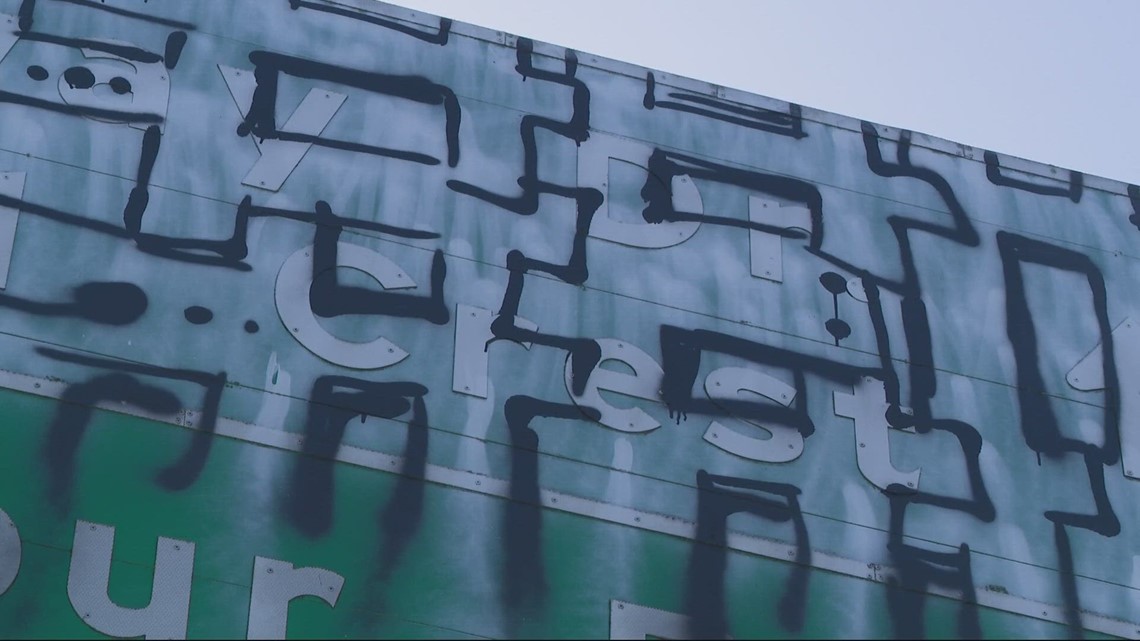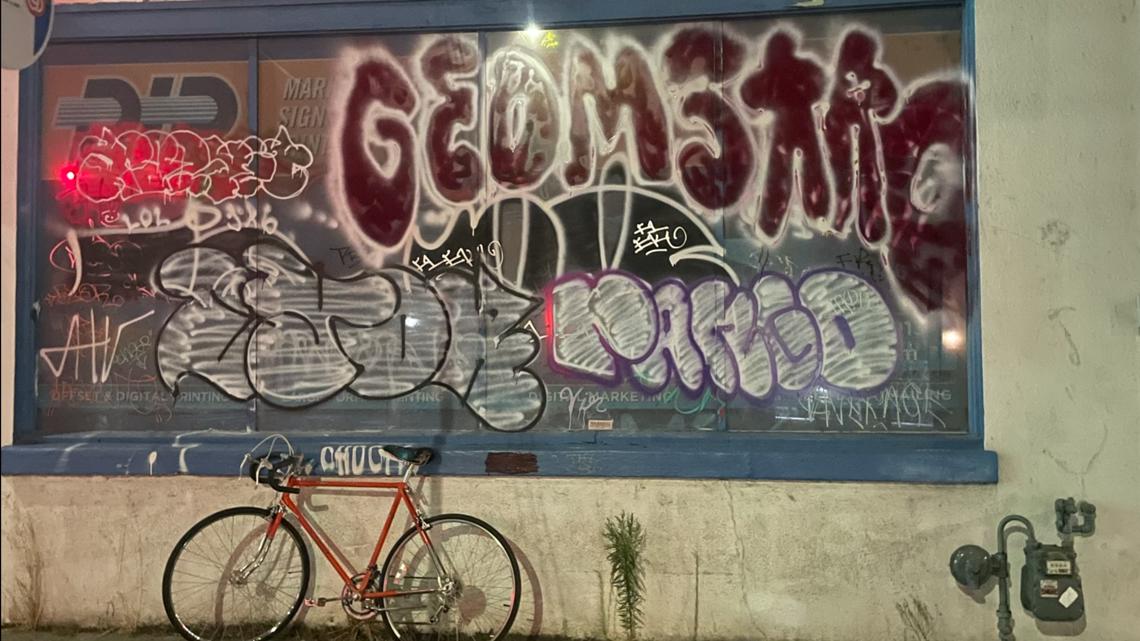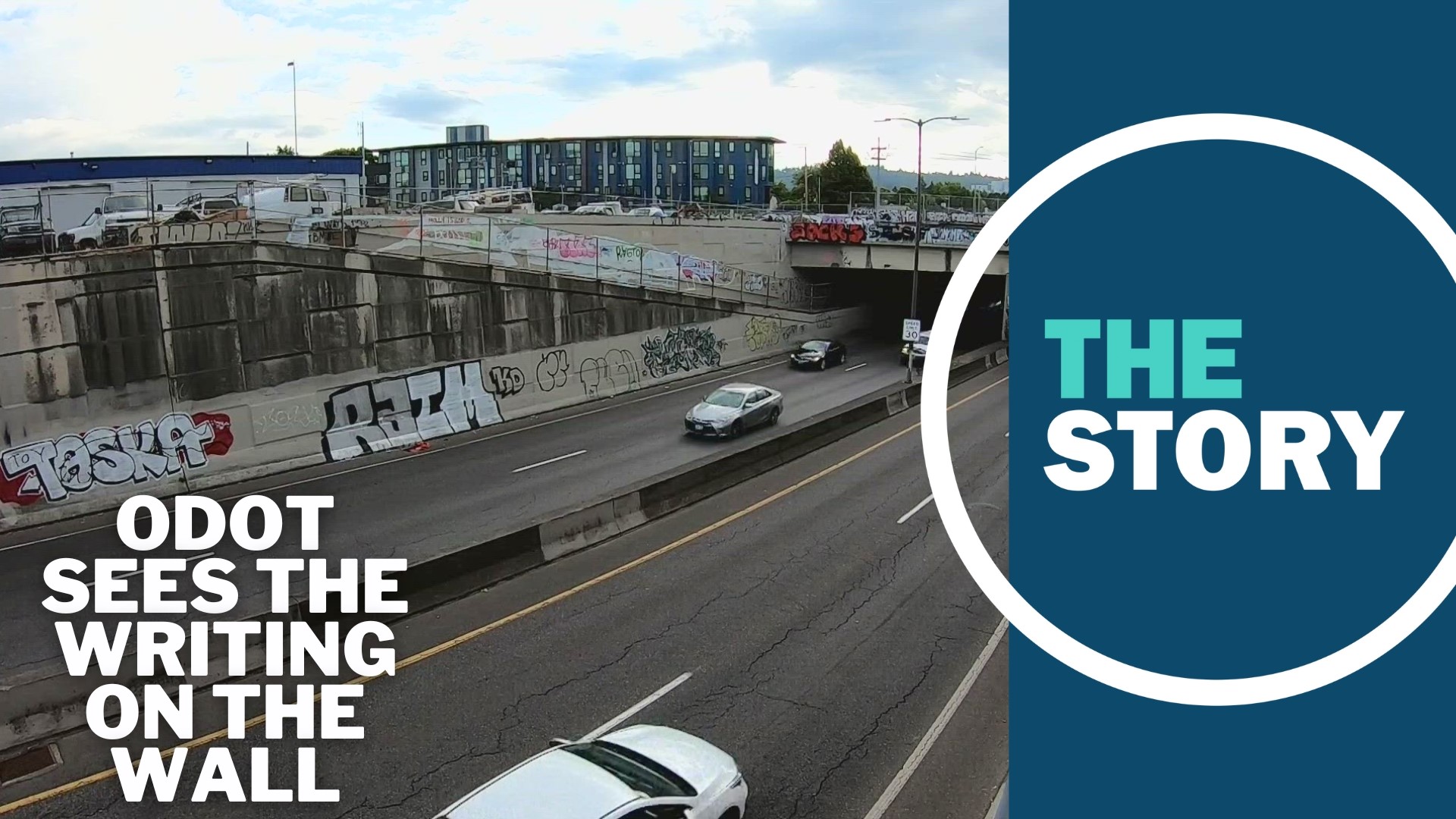PORTLAND, Ore. — Among Portland's contemporary woes, graffiti may not top most folks' list of concerns, but it's often somewhere up in the livability mix. More so than other types of crime, graffiti is rarely prioritized for enforcement, and even cleanup can be a challenge when tagged buildings fall under a range of different owners and jurisdictions.
Graffiti on local freeways and highways may or may not be the most common, but it's undoubtedly the most impactful. Taggers often target signage, obscuring information that travelers need to know.
And the Oregon Department of Transportation, which controls all of that infrastructure, is often ill-equipped to respond. State road maintenance crews are technically tasked with removing graffiti on state rights-of-way, but that's on top of the other work they do to seal cracks in pavement, repaint lines and repair lighting, among other things.
In 2021, the Oregon Legislature gave ODOT an extra $1 million to put toward graffiti removal. Over the next few years, the agency used that and another $1 million of its own funds to hire contractors who removed graffiti. Those funds were gone by fall of 2023, and things started to worsen rapidly.
RELATED: Graffiti obscures more Portland-area highway signs after ODOT's extra clean-up funds run out
This month, ODOT got a shot in the arm: At Gov. Tina Kotek's request, the legislature approved $20 million for ODOT to clean up Portland-area highways — not just by removing graffiti, but by picking up trash, clearing homeless camps and putting in place "preventative measures" that will have more to do with camps than graffiti. Of that total, $4 million is for graffiti removal.
During a recent interview with ODOT Director Kris Strickler, The Story's Pat Dooris asked about that funding and what the agency plans to do with it.
"We hear from our viewers all the time, 'Hey, I went to pick up a relative or a business associate at the airport, and driving in, it looks like crazy town,'" Dooris began. "So, are you going to be able to clean that up, and then, how do you keep it from coming back?"


Strickler began by thanking Kotek and legislature for coming through with some significant funding, even if it is short-term.
"I do think the image and the quality of the system matters as people drive through. We hear that time and time again," he continued. "It's also worth noting our people live here, too, and none of our folks want to see that kind of deterioration on the system.
"That said, how do you keep (it) from coming back? Well, that's a bigger question ... and I'll be honest, obviously, frequency — our ability to get out there and continue to clean it up based upon the funding available — that's going to help a lot. But there are likely other factors, too, that I think are contributing to the amount of graffiti that we have."
Essentially, no matter how much clean-up ODOT does, the agency can't keep it from coming right back.
Strickler acknowledged that police are spread thin, so it's difficult to expect that they'll step up and catch more vandals in the act. Graffiti has been showing up a lot faster in the past few years than it once did, he said.
"Some people were saying, you know, northbound on 405 around Portland State, there's signs that are covered and you can't even tell if you were a visitor where to go ... Why don't those get cleaned or replaced?" Dooris asked.
According to Strickler, those obscured signs are getting replaced — albeit at a snail's pace. But there are reasons why these things don't happen quickly.
"When you look at an overhead sign, for example, that's on a lane of traffic that's doing 60 mph. We have to take that lane; we have to put traffic control out," he said. "We have to have people in a bucket truck that are rising up there in order to replace that sign. Not to mention the fact that they have to get the sign remade in most cases because the sign's been completely ruined.
"All of those factors take a significant amount of prep and time and funding, for that matter. And, you know, the public expects us to have the roadway open and the signs clean, and we're working diligently towards that, so none of this should be an excuse. It's just not as easy as 'We see it today, we run out and fix it tomorrow.'"


The law enforcement response to graffiti has appeared to be hit-and-miss, with police and prosecutors occasionally making an example of particularly prolific taggers. The Portland Police Bureau said that it has a team assigned to graffiti; it's just that the investigations tend to be long and complex.
Just last week, the Multnomah County District Attorney's Office announced charges for 22-year-old Aidan Saul, allegedly responsible for tags reading "GEOMETRO" around the Portland metro area. A grand jury indicted Saul on four counts of criminal mischief and 19 counts of second-degree criminal mischief. He made an initial plea of not guilty.
In February, Portland police arrested Jerry Mijangos, 27. The California man is allegedly responsible for hundreds of criminal tags around the city — painting up the sides of buildings, overpasses and freeway pillars.
PPB's statement shows that Mijangos was arrested multiple times between November 2021 and the end of January 2024. He was released from jail several times in between, before finally being held on a probation violation.
A police spokesman said that the graffiti team brought cases against two other prolific taggers within the last year.

